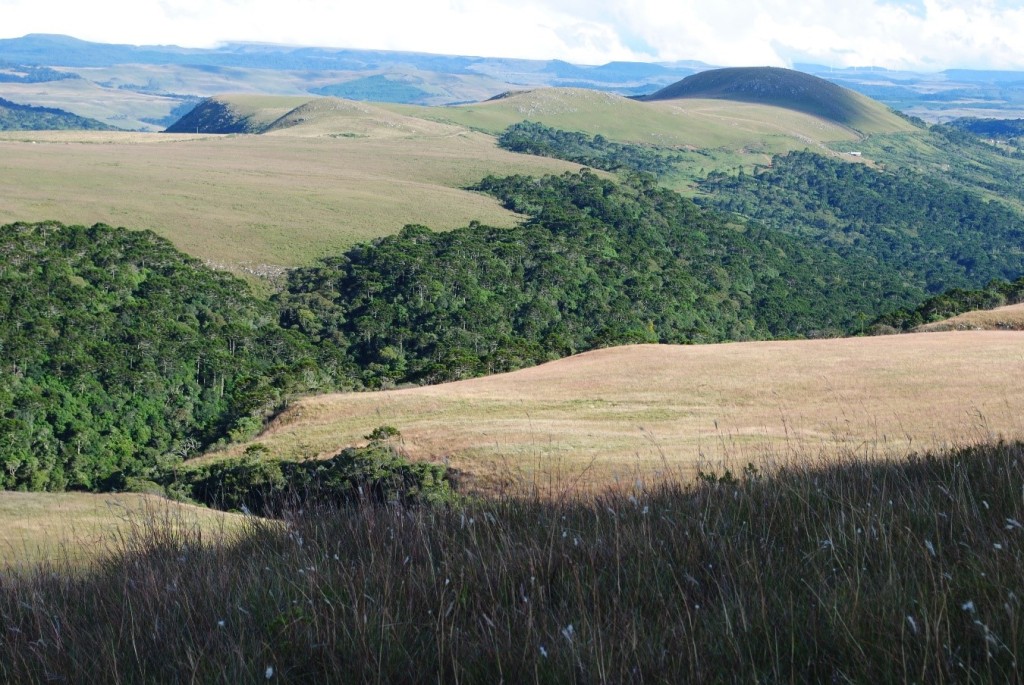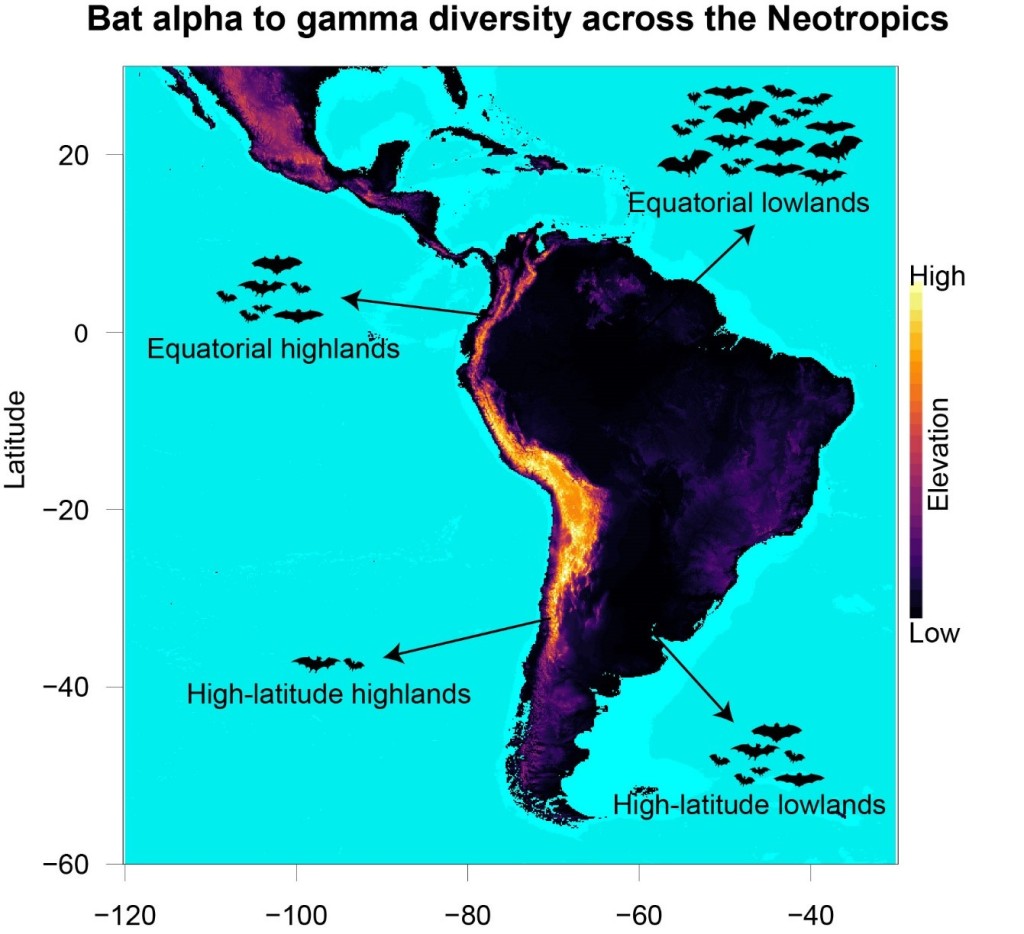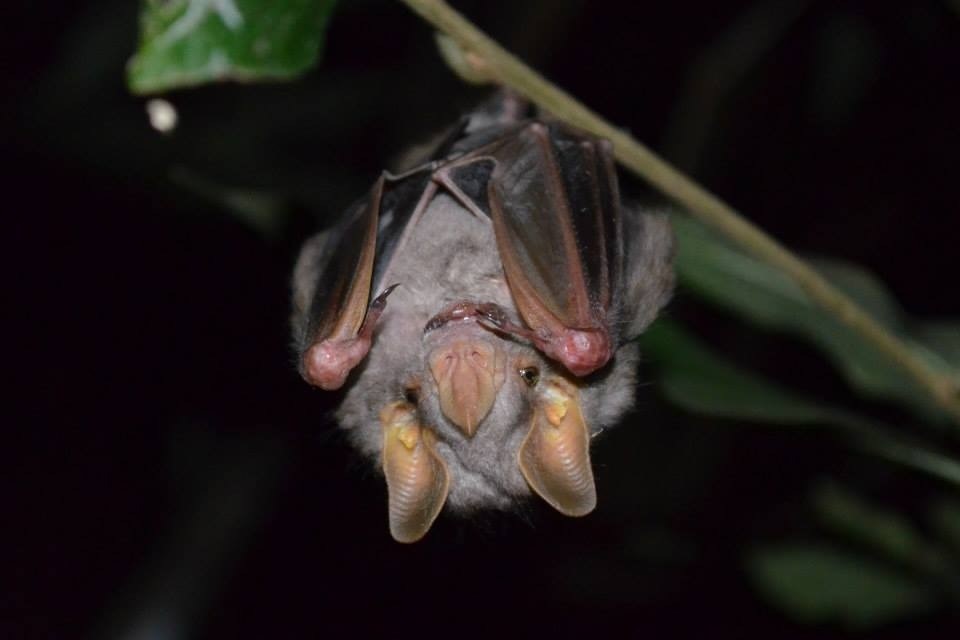This blog post is provided by Juliano A. Bogoni, Vítor Carvalho-Rocha, Katia M. P. M. B. Ferraz & Carlos A. Peres and tells the #StoryBehindThePaper for the paper “Interacting elevational and latitudinal gradients determine bat diversity and distribution across the Neotropics”, which was recently published in the Journal of Animal Ecology. Featured image: Histiotus aff. velatus recorded at Paial municipality, Santa Catarina, Brazil (-27.25 S; -52.52 W; ≌425 m.a.s.l.). Credit. Talita C. Bogoni.
New World bats (Microchiroptera) are iconic vertebrates that often strike fear and repulsion at the heart of many people, and unfortunately are one of the least charismatic suborders of all mammals. But most people fail to realize these flying mammals are magnificent creatures and extremely important for the healthy functioning of ecosystems. This is because bats perform fundamental services such as pollination and seed dispersal, thereby supporting the reproductive viability of hundreds of plant species. In addition, bats are also formidable insect predators, thereby keeping agricultural pest populations in check, saving farmers billions of dollars each year. Bats are also highly diverse. The order Chiroptera, which all bats belong to, is the second most species-rich mammalian order.

The Neotropics are known to harbour the world’s highest mammal species diversity. Neotropical bats, as you can imagine, are also extremely diverse, and they contribute disproportionally in terms of absolute numbers to local mammal assemblages. Yet biodiversity is not homogeneously distributed in space, and many taxa respond to both latitudinal and elevational gradients. Speaking of gradients, we can find the world’s longest latitudinal montane tropical forest gradients in the Andes and the Atlantic Forest, and the largest tropical forest domain in the Amazon, which partly motivated the development of this paper. We began by considering how changes in latitude and elevation can drive patterns of bat diversity throughout the Neotropics. The notion of elucidating the effects of latitude and elevation on the distribution of modern bat diversity across the Neotropics is partly rooted in fieldwork conducted by some of us in the São Joaquim National Park (SJNP), located in the highlands of southern Brazil. SJNP is the homeland of the highest elevation areas in southern Brazil (e.g. Campos de Santa Bárbara [Photo 1] and Morro da Igreja). We wondered how small-bodied homeotherm species exhibiting high metabolic expenditures could inhabit these relatively high-latitude mountains — up to 1,700 meters above sea level — all year-round. We then considered the variation in necessary prerequisites in terms of evolution and life-history traits ensuring that these flying mammals could make a living right across the complex geoclimatic gradients of the New World tropics. Until then, studies at regional or local scales had shown a clear effect of elevation on bat diversity, but exactly how different latitudinal bands interacted with elevation to shape the present-day distribution and diversity of bats remained poorly understood. To try to answer this general question we explored the multiple facets of continental-scale bat diversity and investigated their taxonomic, functional, and phylogenetic distribution.

We hypothesized that all measures of bat diversity would follow patterns of both elevational and latitudinal gradients. However, patterns of taxonomic diversity may depend on species traits such as trophic level, body size, wingspan, as well as home range size. For instance, we would expect to find more large-bodied species foraging at high trophic levels where conditions are more hostile, whereas species with large wing loadings and home range sizes would more frequently occur at mid-latitude lowland areas. Species inhabiting the extremes of both gradients may have a less diverse diet but typically consume high-energy prey items. In addition, basal metabolic rate allometrically scales to body size and may influence the degree to which bats can cope with environmental adversity, and daily rates of dispersal (proxied by wingspan and home range size) may ensure movements across more heterogeneous landscapes. The rate of decline in taxonomic diversity across elevational and latitudinal bands can therefore depend on these four ecomorphological traits, which are themselves driven by phylogeny.

Our results show that latitude is the main determinant of which bat species can occur anywhere along the continental geography, while elevation applies a secondary filter, thereby co-determining the structure of montane bat assemblages. It is therefore important to understand where the mountain range is located along the latitudinal gradient and whether different species are sufficiently adept at withstanding the recurrent geoclimatic stressors that can come their way. We also show that dietary level, home range size, and the spectrum of habitat types occupied were the most important ecological traits determining coarse-scale bat distributions. Our insights further indicate that bat distribution and diversity patterns are multifactorial and highly dependent on the geography of environmental stressors. We hope that by advancing an appreciation of how latitude and elevation shape local bat diversity, better designed conservation efforts can target these so far poorly understood organisms that are so critical in the homeostasis of most tropical ecosystems.


Juliano A. Bogoni (@Bogoni_Eco)
Bogoni has a M.Sc. and Ph.D. in Ecology from the Federal University of Santa Catarina (Brazil; https://ufsc.br/), a specialization in Conservation Biology from the University of Passo Fundo (Brazil) and a Bachelor in Biological Sciences from the Universidade do Contestado (Brazil). He has been working with ecology and conservation for about 13 years, focusing on mammalogy, macroecology, functional biogeography and devoting his approaches to numerical ecology, theoretical ecology, and multivariate statistics. Currently, he is a postdoctoral researcher (FAPESP: https://bv.fapesp.br/en/pesquisador/698900/juliano-andre-bogoni/) at the University of São Paulo (Brazil; https://www5.usp.br/) in co-participation with the School of Environmental Sciences, University of East Anglia (United Kingdom; https://www.uea.ac.uk/).
Vítor Carvalho-Rocha (@CarvalhoRocha_V)
Vítor is a PhD student in Ecology at Santa Catarina Federal Vítor is a PhD student in Ecology at Santa Catarina Federal University of Santa Catarina (Brazil). His main research is on evaluating how subtropical elevational gradients along the Brazilian Atlantic Forest shape frog diversity. He is interested in overall diversity patterns and biodiversity conservation, and is a collaborator at the Amphibian and Reptile Ecology Laboratory at Santa Catarina Federal University (Brazil).
Katia M. P. M. B. Ferraz (@KatiaMFerraz)
Katia has a graduate in Biological Sciences from the Universidade Estadual Paulista Júlio de Mesquita Filho (Brazil), a Master’s in Psychology from the University of São Paulo (Brazil) and a Ph.D. in Applied Ecology from the “Luiz de Queiroz” School of Agriculture of the University of São Paulo (ESALQ/USP-Brazil). She is currently a professor at the Department of Forest Sciences at the ESALQ/USP. She leads the LEMaC Wildlife Ecology, Management and Conservation Lab (http://www.esalqlemac.com.br/) at ESALQ/USP. Katia participates as an advisor in the Postgraduate Programs in Forest Resources (PPGRF) and Applied Ecology (PPGI-EA). She is member of the Conservation Planning Specialist Group (CPSG) of the IUCN. Katia is also a member of the Instituto Pró-Carnívoros and the Instituto Manacá. Katia is interested in research on applied animal ecology, wildlife management, biodiversity conservation, species distribution modeling and human dimensions.
Carlos A. Peres (@CarlosPeres_)
Carlos is a Brazilian conservation ecologist based at University of East Anglia (UK) who earned his PhD at Cambridge University and works in the Amazon and other Neotropical forest regions at landscape to continental scales. He is co-founder and science director of Instituto Juruá http://www.institutojurua.org.br/en/ His research interests are in the large-scale patterns of large-bodied vertebrate diversity and abundance in Amazonian forests; biotic responses to different forms of human disturbance, including hunting, habitat fragmentation and wildfires; and reserve selection and design criteria in relation to regional gradients of biodiversity value and implementation costs. He currently co-directs three research programs on natural resource management in the eastern, southern and western Amazon basin focusing on the ecology of natural and heavily modified landscapes and their role in biodiversity retention.



